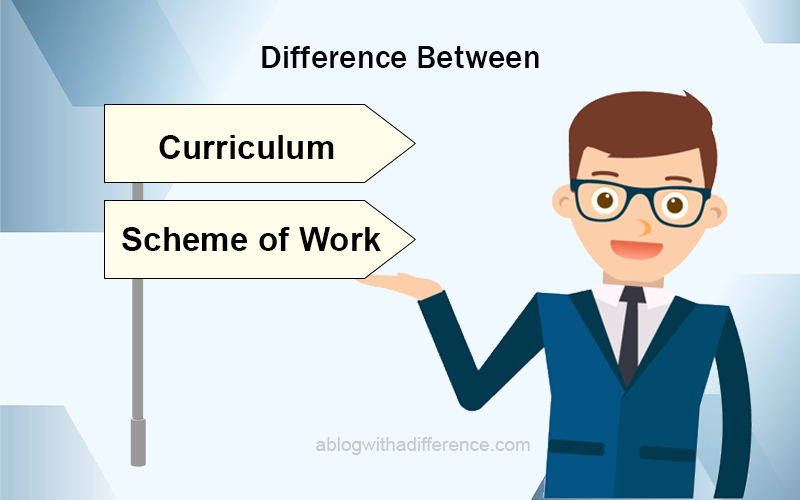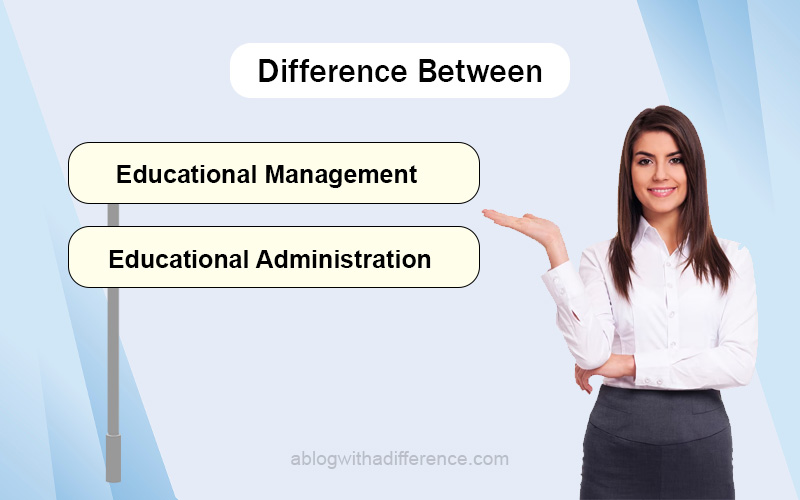Difference Between Curriculum and Scheme of Work
Curriculum and scheme of work is that curriculum refers to the course study, guidelines, lessons, and academic content that have to be taught in a specific course or degree program.
Importance of understanding the difference between Curriculum and Scheme of Work
Understanding the difference between curriculum and scheme of work is crucial for educators, administrators, and policymakers in the field of education.
Here are some key reasons why it is important to grasp this distinction:
- The clarity in Planning: Recognizing the dissimilarity between curriculum and scheme of work helps in effective planning. A curriculum provides the overarching framework, goals, and objectives, while a scheme of work translates that curriculum into a detailed plan with specific learning outcomes, lesson sequences, and assessment strategies. By understanding this difference, educators can develop comprehensive and well-structured plans for teaching and learning.
- Alignment and Consistency: Understanding the relationship between curriculum and scheme of work ensures alignment and consistency in educational practices. A well-designed scheme of work should align with the goals and objectives of the curriculum, ensuring that the intended learning outcomes are met. Inconsistencies between the two can lead to confusion among educators and students, resulting in a lack of coherence in the teaching and learning process.
- Flexibility and Adaptability: Recognizing the difference between curriculum and scheme of work allows for flexibility and adaptability in educational settings. While the curriculum provides a broader framework, the scheme of work can be adjusted and tailored to meet the specific needs and contexts of students and educators. Understanding this distinction empowers educators to make informed decisions and modifications to the scheme of work without deviating from the curriculum’s intended outcomes.
- Effective Assessment and Evaluation: Distinguishing between curriculum and scheme of work is vital for developing appropriate assessment and evaluation strategies. The curriculum outlines the broad goals and objectives, while the scheme of work provides the specific details of teaching and learning activities. By understanding this difference, educators can design assessments that align with the curriculum’s intended outcomes and evaluate students’ progress effectively.
- Communication and Collaboration: Clear understanding of the difference between curriculum and scheme of work facilitates effective communication and collaboration among educators, administrators, and policymakers. When discussing educational practices, having a shared understanding of these terms enables stakeholders to engage in meaningful conversations, provide constructive feedback, and work together towards improving teaching and learning experiences.
Understanding the difference between curriculum and scheme of work is essential for effective planning, alignment, flexibility, assessment, and collaboration in education. It enhances the overall quality of education and ensures that educational goals and objectives are met consistently.
Understanding Curriculum
Understanding curriculum is essential for educators, administrators, and policymakers as it forms the foundation for educational practices.

Here are key aspects to consider when exploring the concept of curriculum:
- Definition: A curriculum refers to a comprehensive plan that encompasses the knowledge, skills, attitudes, and values that students are expected to acquire during their educational journey. It outlines the goals, objectives, content, teaching methods, assessment strategies, and resources needed to facilitate learning.
- Components: A curriculum comprises various components that work together to provide a holistic educational experience. These components may include:
- Goals and objectives: The overarching aims and specific outcomes that students should achieve.
- Content and subject matter: The knowledge and skills that students are expected to acquire in each subject or discipline.
- Teaching and learning methods: The instructional strategies, pedagogical approaches, and techniques used to deliver the content and facilitate learning.
- Assessment and evaluation strategies: The methods and tools used to assess student progress and determine the effectiveness of teaching and learning.
- Resources and materials: Educational resources, such as textbooks, technology, and supplementary materials, are required to support teaching and learning.
- Curriculum Development Process: Developing a curriculum involves a systematic process that includes the following stages:
- Needs assessment: Identifying the needs, interests, and priorities of students, teachers, and the community to inform curriculum development.
- Design and planning: Defining the curriculum’s goals, objectives, content, and learning experiences, considering educational standards and best practices.
- Implementation: Putting the curriculum into practice through instructional activities, resource allocation, and teacher training.
- Evaluation and review: Assessing the effectiveness of the curriculum, gathering feedback from stakeholders, and making necessary revisions or improvements.
- Curriculum Types: Different types of curricula cater to various educational contexts and philosophies. Some common types include:
- Subject-centered curriculum: Emphasizes specific subjects or disciplines and their content.
- Learner-centered curriculum: Focuses on the needs, interests, and abilities of individual learners.
- Problem-based curriculum: Promotes learning through real-world problem-solving and application of knowledge.
- Competency-based curriculum: Emphasizes the acquisition of specific skills and competencies.
- Curriculum and Society: The development of a curriculum is influenced by societal factors such as cultural, social, and economic contexts. A curriculum should be responsive to the needs of the society it serves, preparing students to become active and engaged members of their communities.
Understanding a curriculum involves grasping its definition, recognizing its components, and being aware of the curriculum development process. By understanding curriculum, educators can design effective learning experiences, align instructional practices with intended outcomes, and foster meaningful educational experiences for students.
Understanding the Scheme of Work
Understanding the concept of a scheme of work is crucial for educators as it provides a practical framework for implementing the curriculum.

Here are key aspects to consider when exploring the concept of a scheme of work:
- Definition: A scheme of work refers to a detailed plan that breaks down the curriculum into manageable units, providing a structured outline of what will be taught, how it will be taught, and when it will be taught. It translates the broader curriculum into specific learning activities and sequences them over a designated period.
- Purpose and Objectives: The primary purpose of a scheme of work is to guide teachers in effectively delivering the curriculum and achieving its intended learning outcomes. It provides a roadmap for instruction, ensuring that all essential topics and skills are covered within a specified timeframe. The objectives of a scheme of work include:
- Sequencing: Determining the logical order and progression of topics to optimize student learning.
- Time Allocation: Allocating appropriate time to each topic or unit to ensure coverage within the designated period.
- Differentiation: Considering the diverse needs and abilities of students and incorporating appropriate strategies to address them.
- Assessment and Evaluation: Planning assessments and evaluation methods aligned with the curriculum to measure student progress and achievement.
- Components of a Scheme of Work: A scheme of work typically includes the following components:
- Learning Outcomes and Objectives: Clearly defined statements of what students should know, understand, and be able to do as a result of the instruction.
- Lesson Plans and Sequence of Topics: Detailed plans for each lesson, including activities, resources, and instructional strategies.
- Time Allocation and Scheduling: Allocation of time for each topic or unit, considering factors such as instructional hours and academic calendar.
- Teaching Strategies and Activities: Strategies and activities used to engage students in learning, such as lectures, discussions, group work, or practical exercises.
- Assessment and Evaluation Methods: Methods for assessing student progress and evaluating their achievement, including quizzes, tests, projects, or presentations.
- Flexibility and Adaptability: A scheme of work provides a flexible framework that can be adjusted based on the needs of the students and the specific context. It allows teachers to adapt the sequence, activities, or time allocation as necessary to meet the learning needs of their students.
- Relationship with Curriculum: A scheme of work is derived from the broader curriculum. It aligns with the curriculum’s goals, objectives, and content, ensuring that the intended learning outcomes are addressed. The scheme of work provides the practical implementation of the curriculum, detailing the specific activities and instructional strategies to be used in the classroom.
Understanding the scheme of work is essential for effective curriculum implementation. It provides teachers with a structured plan, guiding them in delivering the curriculum and facilitating student learning. By developing a well-designed scheme of work, educators can ensure that the curriculum is effectively translated into meaningful learning experiences for their students.
Key Differences Between Curriculum and Scheme of Work.
The key differences between the curriculum and scheme of work can be summarized as follows:
- Scope and Level of Detail: The curriculum is a broad framework that outlines the overall goals, objectives, and content of an educational program or course. It provides a high-level overview of what should be taught and learned. In contrast, a scheme of work is a more detailed plan that breaks down the curriculum into specific units or lessons, providing a structured sequence of topics, activities, and assessments.
- Timeframe and Flexibility: The curriculum is typically long-term and encompasses the entire duration of an educational program or course. It sets the overall direction and learning outcomes. A scheme of work, on the other hand, is more short-term and specific, covering a designated period, such as a term or academic year. It provides a flexible framework that allows for adjustments and adaptations based on student needs, progress, and contextual factors.
- Curriculum as a Broader Framework: The curriculum serves as a comprehensive framework that guides the overall educational program or course. It encompasses various components, such as goals, objectives, content, teaching methods, and assessment strategies. It provides a coherent vision and guides decision-making regarding what should be taught and learned. In contrast, a scheme of work is a practical tool derived from the curriculum. It focuses on the specific implementation of the curriculum, providing detailed plans, timelines, and instructional strategies.
- Scheme of Work as a Detailed Plan: A scheme of work is a detailed plan that translates the broader curriculum into specific teaching and learning activities. It outlines the sequence of topics, lesson plans, resources, and assessment methods. It provides guidance for teachers in delivering the curriculum effectively and ensuring the coverage of content within a specific timeframe. The scheme of work adds the necessary detail and structure to facilitate day-to-day instruction.
- Relationship Between Curriculum and Scheme of Work: The scheme of work is derived from the curriculum and is intended to align with its goals, objectives, and content. The scheme of work serves as a practical implementation tool, ensuring that the curriculum is effectively delivered and learning outcomes are achieved. It provides a bridge between the broader curriculum and the classroom instruction.
While the curriculum provides the overall framework and direction for an educational program, the scheme of work translates that framework into specific plans, activities, and assessments for a designated timeframe. The curriculum is broader and long-term, whereas the scheme of work is more detailed and short-term. Both are essential elements in the educational process, with the curriculum guiding the overall vision and the scheme of work providing practical implementation.
Examples and Case Studies
Examples and case studies can provide practical insights into the difference between curriculum and scheme of work.
Here are a few examples and a case study to illustrate their application:
- Example of a Curriculum:
- High School Mathematics Curriculum: This curriculum may include goals such as developing mathematical reasoning, problem-solving skills, and understanding algebraic concepts. It outlines the content areas to be covered, such as number systems, geometry, and statistics. The curriculum also specifies the teaching and learning methods, assessment strategies, and available resources to support instruction.
- Example of a Scheme of Work:
- Grade 4 Science Scheme of Work: This scheme of work is derived from the science curriculum for the fourth grade. It breaks down the curriculum into specific units, such as states of matter, electricity, and ecosystems. Each unit includes a sequence of lessons, learning objectives, instructional activities, and suggested assessment methods. The scheme of work also provides a timeline for covering each unit within the academic year.
- Case Study: Alignment of Curriculum and Scheme of Work Scenario: A school is implementing a new curriculum for English language instruction. The curriculum emphasizes developing reading comprehension, writing skills, and oral communication. The school aims to align the scheme of work with the curriculum to ensure effective implementation
Case Study Details:
-
- The school holds professional development sessions for teachers to familiarize them with the curriculum’s goals, objectives, and content.
- Teachers collaborate to develop a scheme of work that breaks down the curriculum into units, lessons, and activities.
- The scheme of work aligns with the curriculum by clearly stating the learning outcomes, selecting appropriate instructional strategies, and mapping assessments to the curriculum’s objectives.
- The scheme of work is reviewed and refined based on feedback from teachers, administrators, and student performance data.
- Throughout the academic year, teachers follow the scheme of work, regularly assessing student progress, and making adjustments to instruction as needed.
Outcome: The alignment between the curriculum and scheme of work ensures that teachers have a clear plan for implementing the curriculum effectively. It provides coherence in instruction, promotes consistent learning experiences across classrooms, and supports the achievement of the curriculum’s intended learning outcomes.
By examining examples and case studies, educators and stakeholders can better understand how the curriculum and e of gaininginger to guide teaching and learning in various educational contexts. These examples demonstrate how the curriculum sets the broader goals and objectives, while the scheme of work translates them into practical plans for instruction, ensuring alignment and effective implementation.
Comparison chart
| Aspect | Curriculum | Scheme of Work |
|---|---|---|
| Definition | A comprehensive plan that outlines the overall goals, objectives, content, and resources of an educational program or course. | A detailed plan that breaks down the curriculum into specific units or lessons, providing a structured sequence of topics, activities, and assessments. |
| Scope | Broad and long-term, covering the entire duration of an educational program or course. | More specific and short-term, covering a designated period such as a term or academic year. |
| Level of Detail | Provides a high-level overview of what should be taught and learned. | Offers a detailed plan for day-to-day instruction, specifying topics, activities, and assessments. |
| Timeframe | Long-term, encompassing the entire educational program or course. | Short-term, focperiodTimmifictimeiod within the curriculum. |
| Flexibility | Provides the overall framework and direction, allowing for flexibility in implementation. | Offers a flexible framework that can be adjusted based on student needs, progress, and contextual factors. |
| Relationship | Provides the broader framework, goals, and objectives for an educational program or course. | Derived from the curriculum, serving as a practical tool for implementing the curriculum. |
| Components | Includes goals, objectives, content, teaching methods, and assessment strategies. | Consists of units, lessons, activities, and assessments aligned with the curriculum. |
| Role | Guides the overall direction, goals, and content of the educational program. | Translates the curriculum into practical plans for instruction, ensuring effective implementation. |
This comparison chart highlights the distinct characteristics of the curriculum and scheme of work, showcasing their respective roles, scopes, levels of detail, timeframes, and flexibility. Understanding these differences helps educators and stakeholders effectively utilize both elements to support quality teaching and learning experiences.
Role of Curriculum and Scheme of Work in Education
The curriculum and scheme of work play crucial roles in education, supporting effective teaching and learning experiences.
Here are the key roles of each:
Role of Curriculum:
- Guiding Framework: The curriculum serves as a guiding framework that sets the direction, goals, and objectives of an educational program or course. It provides a cofrent vision of what students should learn and the desired outcomes.
- Ensuring Quality Education: The curriculum ensures the delivery of quality education by defining the essential knowledge, skills, attitudes, and values that students should acquire. It helps maintain consistency and standards across different classrooms, schools, or educational systems.
- Providing Content Structure: The curriculum outlines the content and subject matter to be covered, ensuring a well-rounded education. It defines the scope and sequence of topics, promoting a comprehensive understanding of the subject areas.
- Informing Assessment and Evaluation: The curriculum provides guidance for developing appropriate assessment methods and evaluation strategies. It helps educators align assessments with the intended learning outcomes and ensures that student progress is measured effectively.
- Promoting Progression and Continuity: The curriculum supports students’ progression from one educational level to another by providing a clear pathway of knowledge and skills development. It ensures continuity and coherence in the learning process.
Role of Scheme of Work:
- Practical Implementation: The scheme of work translates the curriculum into a practical plan for day-to-day instruction. It breaks down the curriculum into specific units, lessons, and activities, guiding teachers on how to deliver the content effectively.
- Sequencing and Time Management: The scheme of work determines the logical sequence and order of topics to be taught, ensuring a progressive and organized learning experience. It allocates time for each topic, facilitating effective time management within the designated timeframe.
- Differentiation and Adaptation: The scheme of work considers the diverse needs and abilities of students. It provides opportunities for differentiation by suggesting various instructional strategies, resources, and activities that can be adapted to meet individual student needs.
- Resource and Material Planning: The scheme of work helps identify and plan the necessary resources, materials, and teaching aids needed to support instruction. It ensures that teachers have access to the appropriate resources to deliver the curriculum effectively.
- Monitoring and Evaluation: The scheme of work allows for ongoing monitoring and evaluation of student progress. It provides a basis for assessing whether the intended learning outcomes are being achieved and helps identify areas that may require further attention or modification.
The curriculum provides the overarching framework, goals, and objectives, while the scheme of work translates that framework into practical plans for instruction. Both are essential in providing a structured and coherent educational experience, ensuring q,uality educatio, and supporting effective teaching and learning.
Conclusion
Understanding the difference between curriculum and scheme of work is crucial for educators and educational stakeholders. While the curriculum provides the overall framework and direction for an educational program, the scheme of work translates that framework into specific plans, activities, and assessments for a designated timeframe. The curriculum sets the goals, objectives, and content, while the scheme of work guides the practical implementation of the curriculum, providing a detailed plan for day-to-day instruction.


